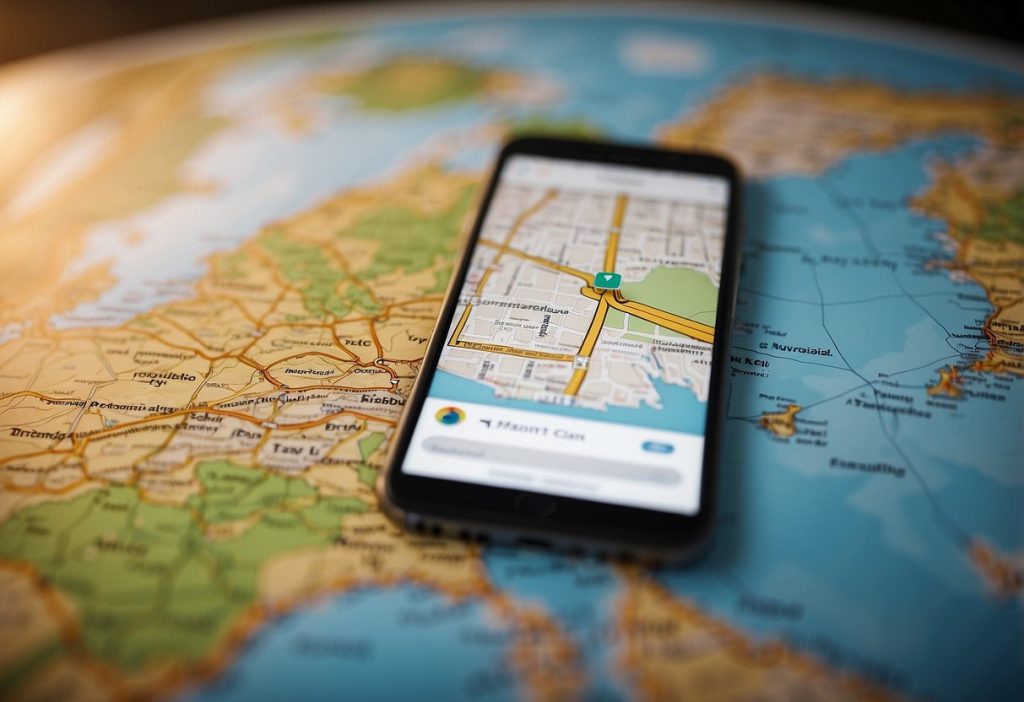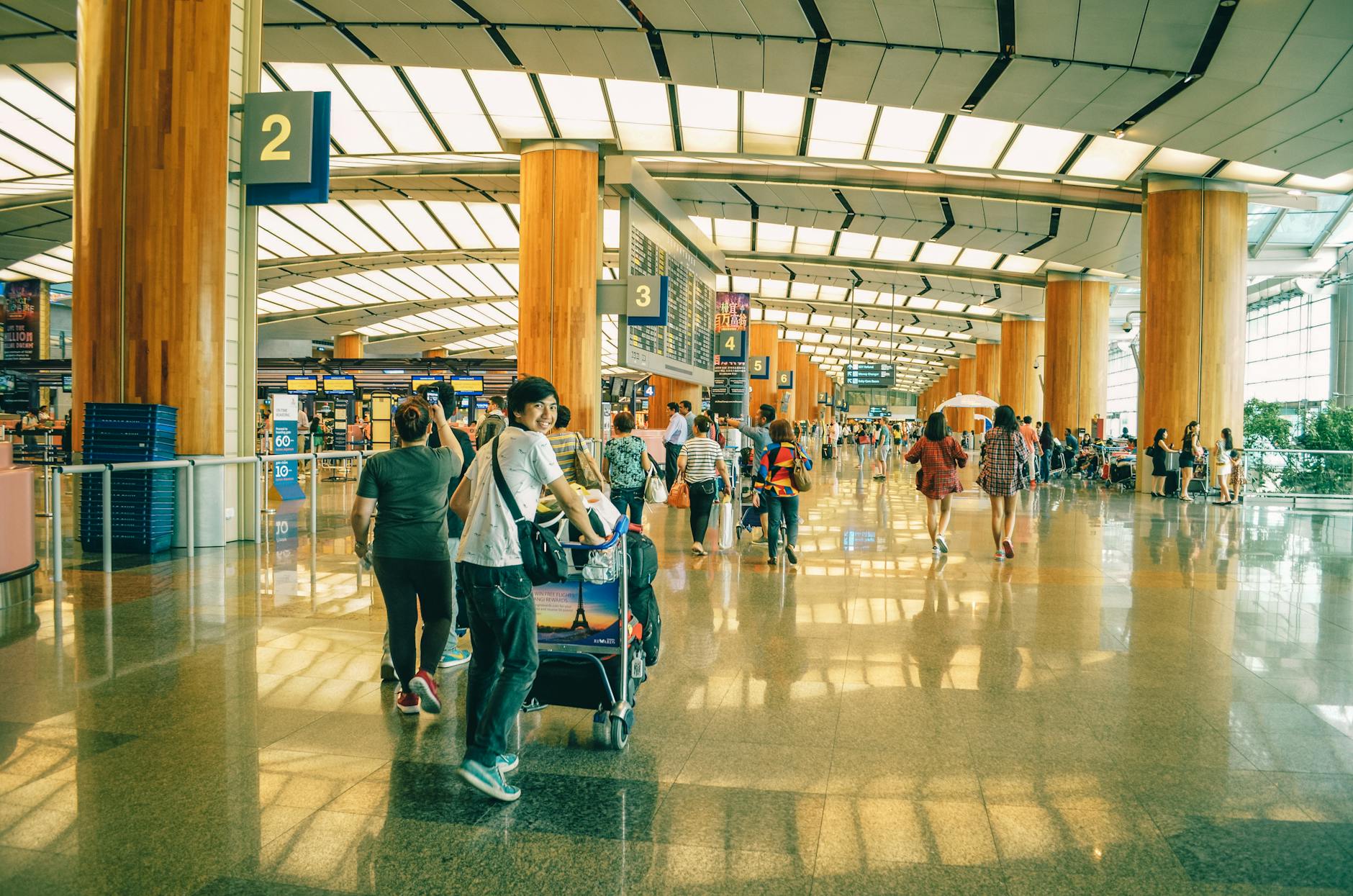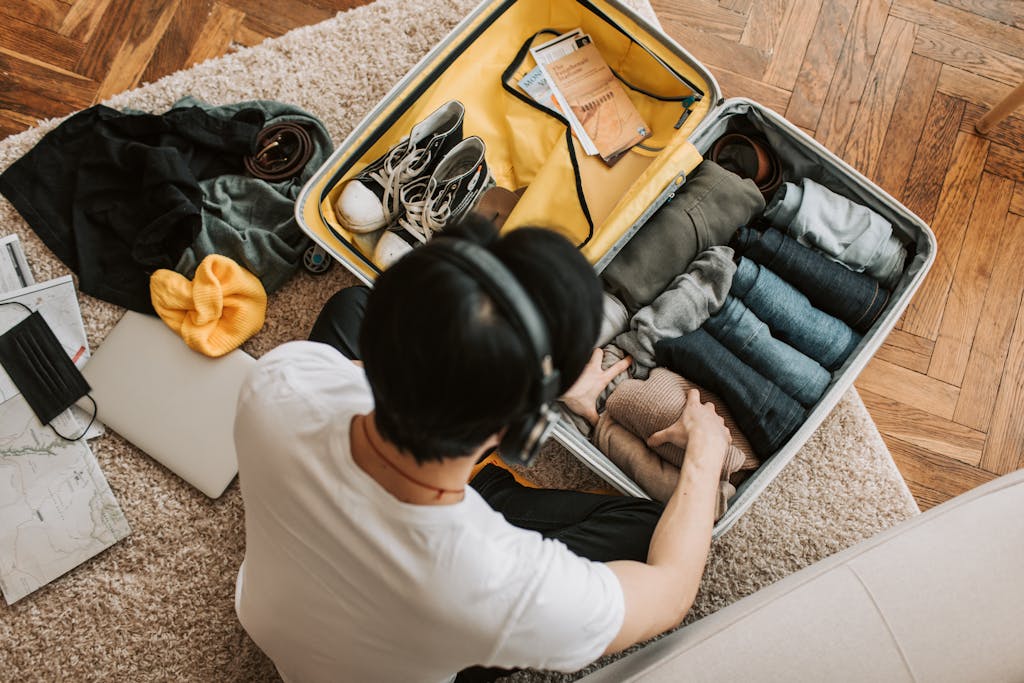How to Snag the Best Flight Deals for Solo Travelers
Ever found yourself scrolling endlessly through flight options, only to end up booking that overpriced ticket at the last minute because you just couldn’t find a better deal?
Yeah, me too.
There I was, planning my first solo trip to Bali (excited and nervous), thinking I’d just grab a flight deal last minute, and, my wallet wept.
But let’s not focus on the past. Instead, let’s talk about how you can avoid my mistakes and become a pro at snagging the best flight deals for your solo trip.

Supply and Demand
First up, let’s talk supply and demand. It’s the main reason flight prices fluctuate.
When more people want to fly, prices go up.
When fewer people want to fly, prices go down. Think of it like this: if there’s a big concert in town, hotels get booked up, and the price for a room skyrocket. Flights work the same way.
- High Demand Times: Holidays, weekends, and peak seasons.
- Low Demand Times: Mid-week days, off-peak seasons.
Airline Pricing Strategies
Airlines use complex algorithms that decide ticket prices based on various factors. Let’s break down some of these factors:
- Time of Booking: Book six months in advance, and you might get a steal. Book a week before? Prepare your wallet.
- Competitor Prices: Airlines don’t want to be undercut, so they often match or slightly undercut competitors’ prices.
- Fare Classes: Economy, premium economy, business, and first-class all have different pricing tiers. And within economy, there can be multiple price points.
- Seasonal Prices: Prices change depending on the season. Think beach destinations in summer and ski resorts in winter.
Days and Times to Fly
Believe it or not, the day and time you choose to fly can make a big difference. Flights on Tuesday and Wednesday are usually cheaper because fewer people are flying.
Late-night flights (red-eyes) and early-morning flights are also often cheaper.
Fuel Prices and Taxes
Airlines need fuel to fly, and fuel prices can change just like gas prices at your local station. If fuel prices go up, so do ticket prices.
Taxes and fees also play a role. Airports have different charges, and these get added to your ticket price.
Special Deals and Discounts
Many airlines offer special deals and discounts. It might be a flash sale or a loyalty program discount. Signing up for airline newsletters can help you stay in the loop for such deals.
The Role of Flight Routes
Not all routes are priced the same.
Popular and direct routes are usually more expensive than flights with layovers. Also, some airports have higher fees, which can increase the cost.
Understanding these basics can arm you with the knowledge to find better deals and understand why prices are the way they are. It’s not just about clicking “search” and hoping for the best.

Best Times to Book Flights
Finding the best deals on flights can feel like trying to find a needle in a haystack.
But for solo travelers, nabbing those sweet deals can be a real game-changer. Let’s dive into the best times to book flights so you can save some cash and spend it on exploring new places (or maybe just a fancy coffee).
Ideal Booking Window
You’ve probably heard the rumors: “Book your flights 6 months in advance!” or “Wait until the last minute!” But what’s the real deal?
- Domestic Flights: For flights within the U.S. (or your home country), booking 1 to 3 months in advance is usually your best bet. Flights tend to be cheaper during this window. If you book too early, you might miss out on discounts, and if you book too late… well, you’re at the mercy of the airline gods.
- International Flights: Oh, the international conundrum! For flights heading outside your home turf, aim for about 3 to 6 months in advance. Flights to Europe, Asia, and other hot spots often have better deals in this timeframe.
- Peak Seasons: Now, if you’re eyeing a trip during Christmas, New Year’s, or summer holidays, you might want to book a bit earlier. Think of it as grabbing the last cookie before everyone else notices they’re gone. For these times, 6 to 9 months ahead can save you from a potential price surge.
It really boils down to a balancing act. Too early, and you might miss out on deals.
Too late, and prices can skyrocket. Timing really is everything.
Day of the Week Insights
Here’s a little secret: Not all days are created equal when it comes to booking flights. Some days are like snagging front-row concert tickets, while others are more like being stuck in the nosebleeds.
- Tuesdays and Wednesdays: These days are the champions of the skies. Airlines often release deals on Monday nights, and by Tuesday morning, those discounts are ripe for the picking. So, when you’re planning your next adventure, try booking your flight mid-week.
- Thursdays: Close on the heels of Tuesdays and Wednesdays, Thursdays can also be a great day for deals. It’s like finding a $5 bill in your jeans pocket—unexpected but totally welcome.
- Avoid Weekends: Booking flights on Saturdays or Sundays? That’s a rookie mistake. Airlines know most people have free time on weekends to plan trips, so prices can be higher. It’s the airline’s sneaky way of fleecing you for a bit more cash.
- Flying Out: As for the best days to fly out? Mid-week flights (Tuesday, Wednesday, and sometimes Saturday) usually have lower fares. Plus, airports are less crowded, so you won’t have to elbow your way through like you’re in a mosh pit.
In short, if you’re looking to score the best deals, be strategic about the day you book and the day you fly.
Top Flight Comparison Websites
Alright, let’s talk shop. You can’t just pick a flight search engine randomly and hope for the best.
Each has its own flair and features that make it unique. Here are some of the top contenders:
- Google Flights: This one’s the big cheese. Why? Because it’s super user-friendly and lets you compare prices across airlines in a snap. Plus, it has a nifty feature that shows you the cheapest days to fly. Who doesn’t love a good deal?
- Skyscanner: Imagine a detective hunting down the best flight deals for you. That’s Skyscanner. It compares flights from multiple airlines, travel agencies, and even lesser-known booking sites. The “Everywhere” feature is perfect if you’re open to new destinations at a good price.
- Kayak: Kayak is like the Swiss Army knife of flight search engines. It compares flights, hotels, car rentals, and more. Plus, its price trend tool helps you decide whether to book now or wait.
- Momondo: This one’s a gem for those who love data. It gives you insights into when to book and even shows a price map with the cheapest destinations.
- Hopper: If you’ve got time, Hopper can be your best buddy. It predicts future prices and tells you the best time to book. The cute bunny mascot is a bonus, right?
You see, using these tools not only saves money but also gives you more options. Think of it as having an advisory board for your travel plans.
Setting Price Alerts

Now, let’s talk about something super handy – price alerts. Imagine having a personal assistant that watches flight prices for you. That’s exactly what price alerts do.
Setting them up is a breeze:
- Choose Your Flight Search Engine: All the big names like Google Flights, Skyscanner, and Kayak offer price alerts. Pick your favorite.
- Input Your Travel Details: Enter your departure and destination cities, travel dates, and any other preferences you have.
- Activate the Alert: Click on the “set alert” button or its equivalent. Some sites let you choose how often you get updates – daily, weekly, etc.
Benefits? Oh, tons! First off, you get real-time updates on price drops.
Second, it saves you from the FOMO (fear of missing out) because you’ll be notified of every little change.
And last but not least, you’ll be able to pounce on deals as soon as they pop up.
So, set those alerts and let the deals roll in.
Flexibility in Travel Plans
Being flexible with your travel plans can open the door to some seriously awesome flight deals.
We’ll explore two key strategies: using flexible date search options and considering nearby airports.
Using Flexible Date Search Options

Ever notice how flights seem to magically get cheaper or more expensive depending on what day you look?
There are some serious money savings that you can tap into by using flexible date search options on flight search engines.
When you’re hunting for flights, most search engines have a “flexible dates” option.
This tool lets you view prices for a range of days. Instead of locking in specific dates, you can see if flying a day earlier or later saves you some cash. Imagine you’re about to book a flight on a Thursday, but moving it to Wednesday cuts the price in half—it’s like finding money under your couch cushions!
Here’s how to use it:
- Open the flight search engine: Think Google Flights or Skyscanner.
- Select your departure and destination cities: Easy peasy.
- Opt for flexible dates: Look for options like “+/- 3 days” or a calendar view.
- Compare prices: Check different days to see where the deals are hiding.
Seriously, this tool is a goldmine for solo travelers looking to save a few bucks (or a lot of bucks!).
Consider Nearby Airports
Okay, let’s talk about airports. Sometimes the best deals aren’t at the biggest or most obvious airports.
Instead, look at smaller or nearby airports for potentially cheaper options.
For instance, if you’re flying into New York City, don’t just check JFK. Look at Newark or LaGuardia, too.
The prices can vary wildly, and you might snag a better deal with a bit of detective work. And hey, a little bit of extra driving or public transit isn’t the end of the world, right?
Here’s how to scout out nearby airports:
- Use a radius search: Some flight search engines let you search for airports within a certain distance.
- Check all nearby airports: List out major and minor airports around your destination.
- Compare total costs: Factor in any extra transit costs to get to your final destination.
By considering nearby airports, you might find yourself not only saving money but also possibly discovering new and interesting places along the way. It’s like a two-for-one travel deal!
Leveraging Loyalty Programs and Points
Who doesn’t love snagging a fantastic deal on flights, especially when solo traveling? If you’ve ever wondered how folks manage those nearly-free flights, it’s often thanks to loyalty programs and points.
Yep, you heard that right—signing up for stuff can actually pay off (big time).

Sign-Up Bonuses and Promotions
So, the first thing you gotta do is sign up.
Airlines love to reel you in with flashy sign-up bonuses and sweet promotions. They’re like those “buy one get one free” deals but WAY better.
- Heaps of Miles: Many programs give you a chunk of points just for joining. Think about it: You sign up, and BAM, free miles to use.
- Limited-Time Offers: Sometimes, airlines run promos where you get bonus points if you fly a certain number of times in a month. Keep an eye out for these!
- Email Alerts: Once you’re in, you’ll get alerts for special rewards and promotions. You know those spammy emails you usually ignore? Don’t this time—they could be your ticket to major savings.
Maximizing Credit Card Points
Now, let’s talk plastic. If you’re smart about using travel rewards credit cards, you can rack up points faster than you can say “boarding pass.”
- Choose Wisely: Not all travel cards are created equal. Look for ones that offer hefty bonus points just for spending a certain amount in the first few months.
- Everyday Spending: Use your travel card for everyday purchases like groceries, gas, and even your Netflix subscription. Those points add up, trust me.
- Double or Triple Points: Some cards give you more points when you spend on travel-related purchases, like booking flights or staying in hotels. Make sure to take advantage of these multipliers.
- Avoid Interest: Here’s the trick—only spend what you can pay off each month. Travel cards often have high interest rates, so avoid letting that balance snooze like it’s Sunday morning.
Leaning into these loyalty programs and optimizing your credit card usage isn’t just smart; it’s savvy.
Alternative Travel Strategies
When it comes to finding the best deals on flights as a solo traveler, thinking outside the box can really pay off.
There are creative ways to save money that you might not have considered. Let’s explore some of these alternative travel strategies that can help make your travel dreams a reality.
Considering Budget Airlines
Budget airlines can be an amazing way to save some serious cash on flights.
They often offer cheaper fares compared to traditional airlines, but there are a few things you’ll need to keep in mind to ensure you’re getting the best deal and flying safely.
First, research is your best friend:
- Compare Prices: Use flight comparison websites like Skyscanner or Momondo to see a full range of options. These platforms show flights from different budget airlines side-by-side, so you can easily find the cheapest tickets.
- Check Airline Reviews: Make sure the budget airline you’re considering has good reviews. Websites like TripAdvisor can be very helpful here. No one wants to be stranded with a canceled flight and no backup plan.
- Understand Extra Fees: Many budget airlines keep their fares low by charging for extras like checked baggage, seat selection, and even printing your boarding pass at the airport. Read the fine print or you might end up with a ticket that’s not as cheap as it first seemed.
Booking tips:
- Book Early: Budget airlines often have a limited number of cheap seats. The earlier you book, the better the deal you’re likely to get.
- Be Flexible with Dates and Airports: Sometimes flying on a Tuesday instead of a Friday can save you a bundle. Also, consider nearby airports if they offer better deals.
By following these steps, you can snag great deals with budget airlines and still have peace of mind.
The Benefits of Last-Minute Deals
Ah, the thrill of last-minute deals. They’re like finding a $20 bill in your pocket when you thought you were broke. Solo travelers, in particular, can benefit a lot from these spontaneous opportunities.
Why last-minute deals rule:
- Flexibility is Your Friend: As a solo traveler, you don’t have to coordinate with anyone else’s schedule. This makes it easier to jump on a last-minute deal when it pops up.
- Deep Discounts: Airlines don’t want to fly with empty seats, so they offer significant discounts to fill up the plane at the last minute. You can find these deals on sites like LastMinute.com or even directly on airline websites.
- Exciting Destinations: Sometimes, last-minute deals can take you to places you hadn’t even considered. It’s like travel roulette!
To get in on the action:
- Sign Up for Alerts: Websites like Scott’s Cheap Flights send out email alerts for last-minute deals. Subscribing can give you a head’s up when prices drop.
- Check Frequently: Deals can change rapidly, sometimes within hours. Make it a habit to check last-minute deal sites often.
- Be Ready to Go: Keep your travel essentials packed and your passport up-to-date. When a great deal comes up, you won’t want to waste time getting ready.
So, if you’re the spontaneous type who loves a good bargain, taking advantage of last-minute deals might just be your ticket (pun intended) to affordable adventures.
Key Points
1. Be Flexible with Dates and Destinations
Oh, the luxury of solo travel! No arguing with friends or partners over dates and destinations. You’re free as a bird. Use this to your advantage.
Tools of the Trade
- Google Flights: This gem allows you to explore destinations based on your budget. Just enter your departure city and click on the map to see where you can fly for cheap.
- Skyscanner: Use the “Everywhere” search function to find the best deals worldwide. The world is your oyster!
2. Set Fare Alerts
Remember those YouTube notifications you get? Imagine if you got similar alerts for flight prices. Websites like Kayak, Hopper, and Momondo allow you to set fare alerts. They’ll send you an email whenever there’s a price drop. Trust me, there’s nothing more satisfying than getting an alert for a $200 drop on your dream destination.
3. Use Incognito Mode
Believe it or not, airlines can track your searches and adjust prices accordingly. Yeah, it’s sneaky. To outsmart them, always search for flights in incognito mode or clear your browser cookies. It’s like wearing a disguise while hunting for deals.
4. Travel During Off-Peak Times
Sure, everyone wants to go to Paris in the springtime. But guess what? It’s also the most expensive time to fly. Instead, consider traveling during the shoulder seasons (just before or after peak season). You’ll not only snag cheaper flights but also enjoy fewer crowds.
5. Join a Frequent Flyer Program
Yes, even if you think you’ll only fly once in a blue moon. Accumulating points can lead to significant savings down the line. Plus, it feels pretty cool to whip out your frequent flyer card, doesn’t it?
6. Consider Alternative Airports
Flying into London Heathrow? Yawn. Try Gatwick or Stansted instead. Sometimes flying into a secondary airport can save you a chunk of change. Be sure to factor in transportation costs to your final destination, though. It’s all about the balance.
7. Leverage Social Media
Follow airlines and travel deal accounts on Twitter, Facebook, and Instagram. Many airlines post flash sales and last-minute deals exclusively on their social media channels. You don’t have to become a full-blown influencer, but a little stalking won’t hurt.
Conclusion

So, as you gear up for your next solo adventure, use these tips to score the best deals.
Your wallet will thank you, and you’ll have extra cash for all those spontaneous street-food splurges and unplanned detours.






